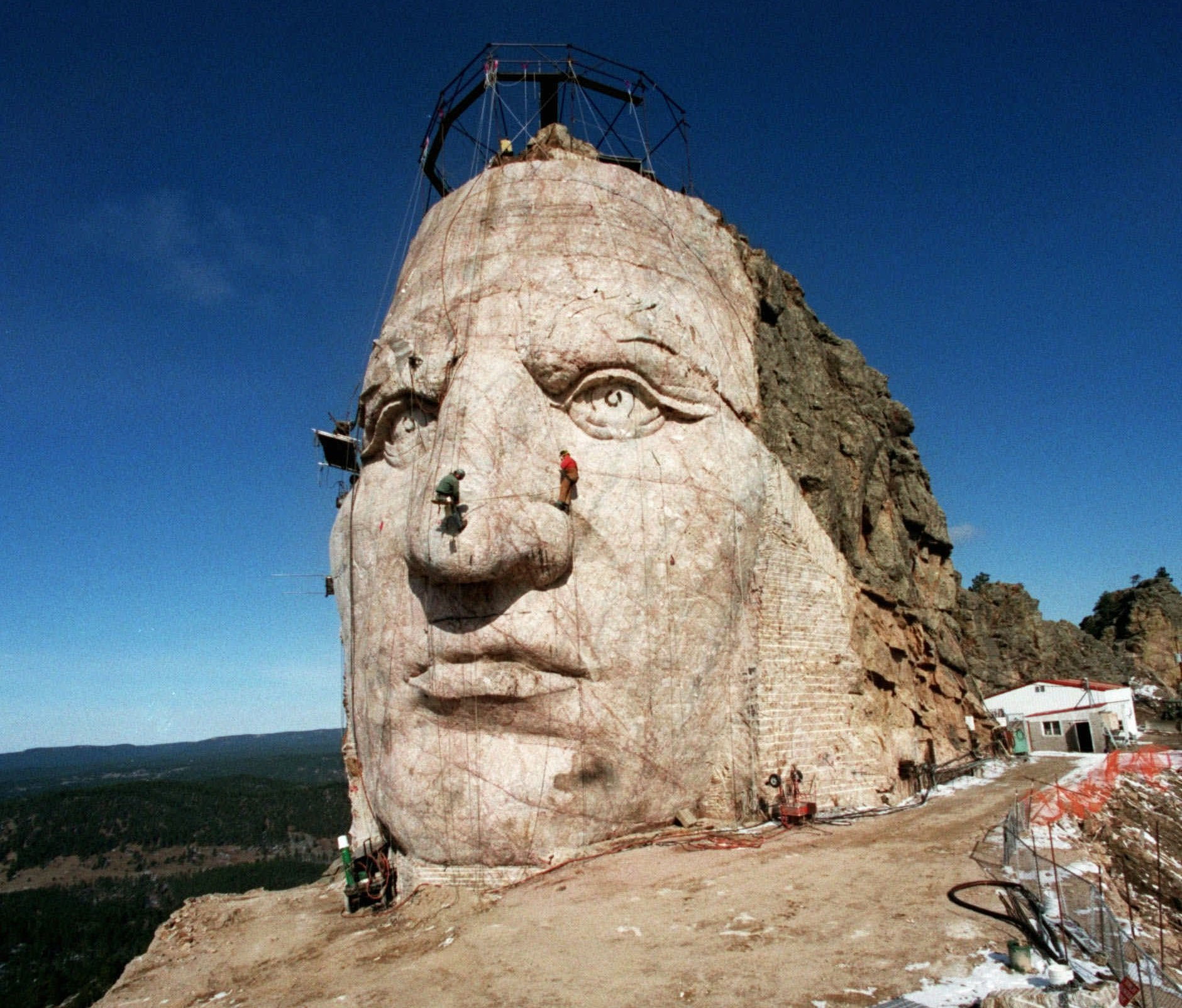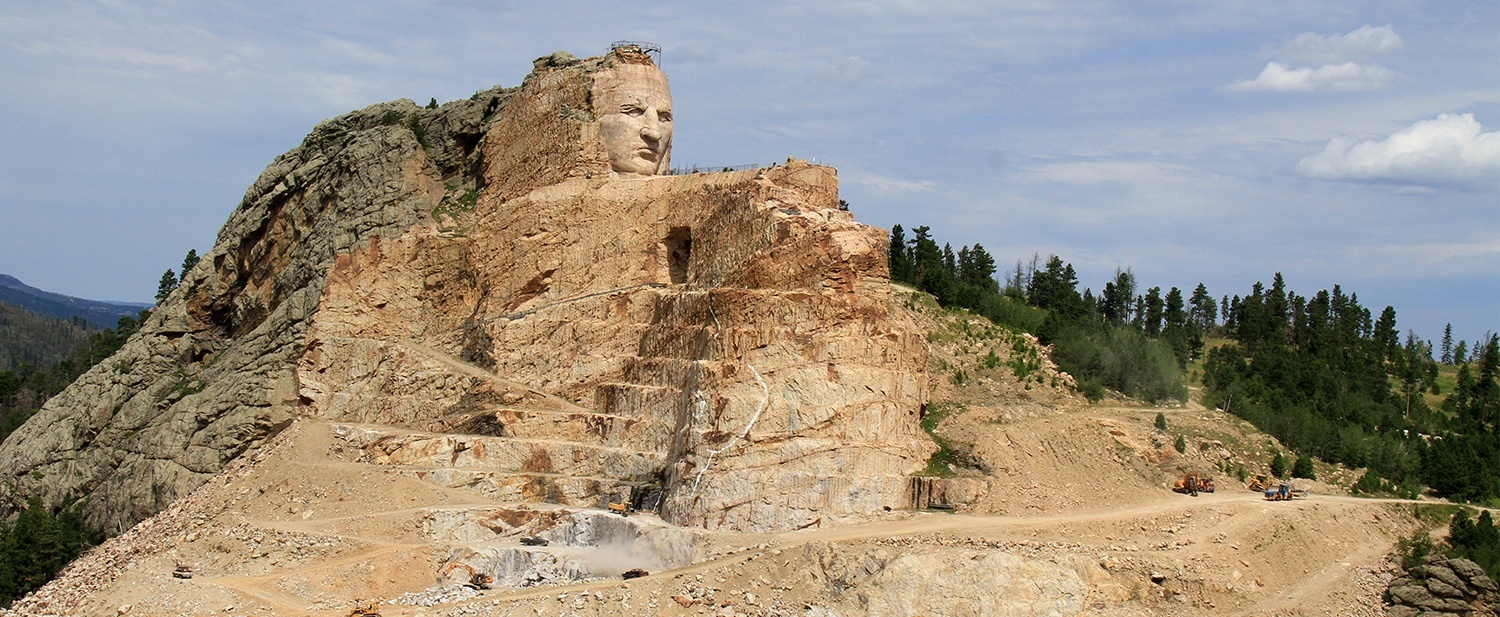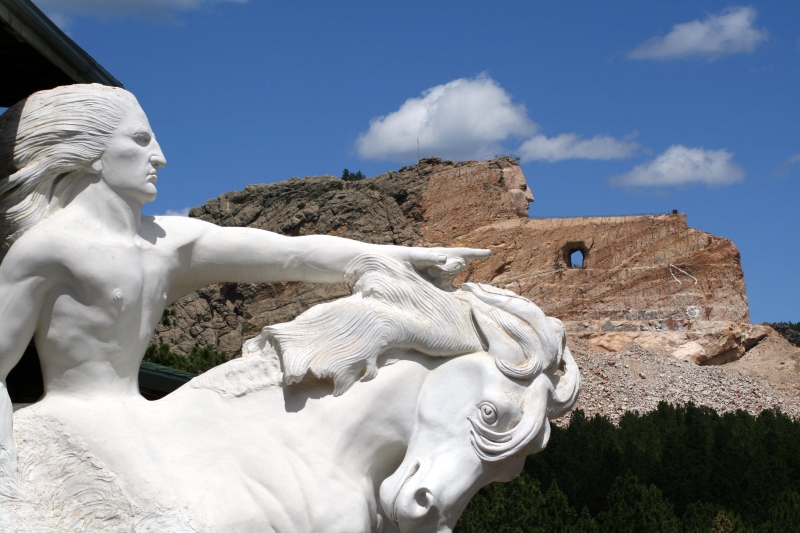Crazy Horse and the Monument That Honors His Legacy
Crazy Horse was born during a time of great upheaval in the annals of the West. It was a time when settlers came in droves to claim land that was once the property of the Sioux Indians. Some western historians note that the 1840s were an era that brought the expansion of the West to the forefront. Other arguments for the turbulent relations between the Indians and the mostly white settlers were the plain facts that most settlers considered Western lands theirs for the taking. The attitude towards the Indians that lived on the land was poor.
Environment of the Times

image:Wikipedia
It was during this period of time between the 1840s and 1850s that Americans embraced “manifest destiny” a term first coined by John L. O’Sullivan in an article he wrote on the annexation of Texas. Americans were also coming off a Panic that set off in 1837. The feelings of the settlers mirrored the manifesto that they were entitled to land and should uproot the Native Americans in the process.
Other events stirred the pot of discontent and anger. Crazy Horse, a member of the Lakota tribe had already proven himself a noble warrior by the time he was a teenager in the mid-1850s. His early legacy included stealing horses from the neighboring Crow tribe and fighting in the 1865-1868 war to eradicate settlers in Wyoming. It was Crazy Horse’s determination to save his heritage that tipped the scale for him. In the turbulent and unsettled time in which Native Americans were considered less than human, Crazy Horse rallied his tribe to fight against the encroachment of settlers on their land.
Battle of Little Big Horn
Crazy Horse’s legacy is tied to the Battle of Little Big Horn, which many know as “Custer’s Last Stand.” It was because the US Government had decided on their own to force the Lakotas onto reservations that Crazy Horse decided to attack and take back the land. He gathered a huge force of fellow tribe members and others to fight the encroachment. The Battle of Little Big Horn marked an important turning point in the relationship between the Native Americans and the settlers. It also made Crazy Horse famous along with Sitting Bull as it proved that the Native Americans were a force to be reckoned with and respected.
The story of Crazy Horse inspired Henry Standing Bear, chief of the Lakota tribe to ask Korczak Ziolkowski to create a memorial in 1939. To Standing Bear, it just seemed fitting that the victor in the Battle of Little Big Horn would be recognized. Ziolkowski took up the project in 1948.
A Memorial for the Ages

image:Wikipedia
Ziolkowski’s commitment to the project showed in the detailed model he created. Taking direction from photographs and drawings, Ziolkowski created a model that personified Crazy Horse’s spirit. The Black Hills of South Dakota near where the battle took place was chosen for the stone memorial. The granite composition of the mountains proved to have some unique properties, which brought along some challenges that deterred the project. Some of these challenges were easily surmountable while others proved to take longer to accomplish.
It was deemed early on in the process to create a monument that surpassed Mount Rushmore in its scope. It was the feeling that the monument would reflect the traditions and spirit of the Native Americans.
Learning and Supporting a Legacy
Visitors to the Black Hills should visit this memorial. Understanding the rich legacy Native Americans have left us enriches our lives. It is important to understand what Crazy Horse went through in his life to preserve his heritage and way of life.
Challenges do remain. The magnitude of the project has increased exponentially as the work continues. Time and money factors play a role in the project. New technologies are helping, including VSAT services and excavation projection software. In the article, “The Slow Carving of Crazy Horse Monument” dated January 8, 2013, the descendants of Korczak Ziolkowski are using new technologies that are helping move the project in a new direction.
The Crazy Horse Memorial is funded primarily through private donations and public admissions. There is no exact estimate of the cost of the project, but the foundation has raised over 19 million dollars to finance various stages of it. Local colleges and universities have utilized the facilities to learn about Native Americans and their role in American history. The work is ongoing as three members of the Ziolkowski family have taken over the reign from Ruth Ziolkowski.
USA Records Organization_USKINGS are still collecting more information from many sources and it is our pleasure listening to everybody's comments to have a full evaluation of the USA Record story:”Building a Legacy for Native Americans: The Story of Crazy Horse “
According to blackhillstravelblog
USA RECORDS ORGANIZATION_USKINGS



